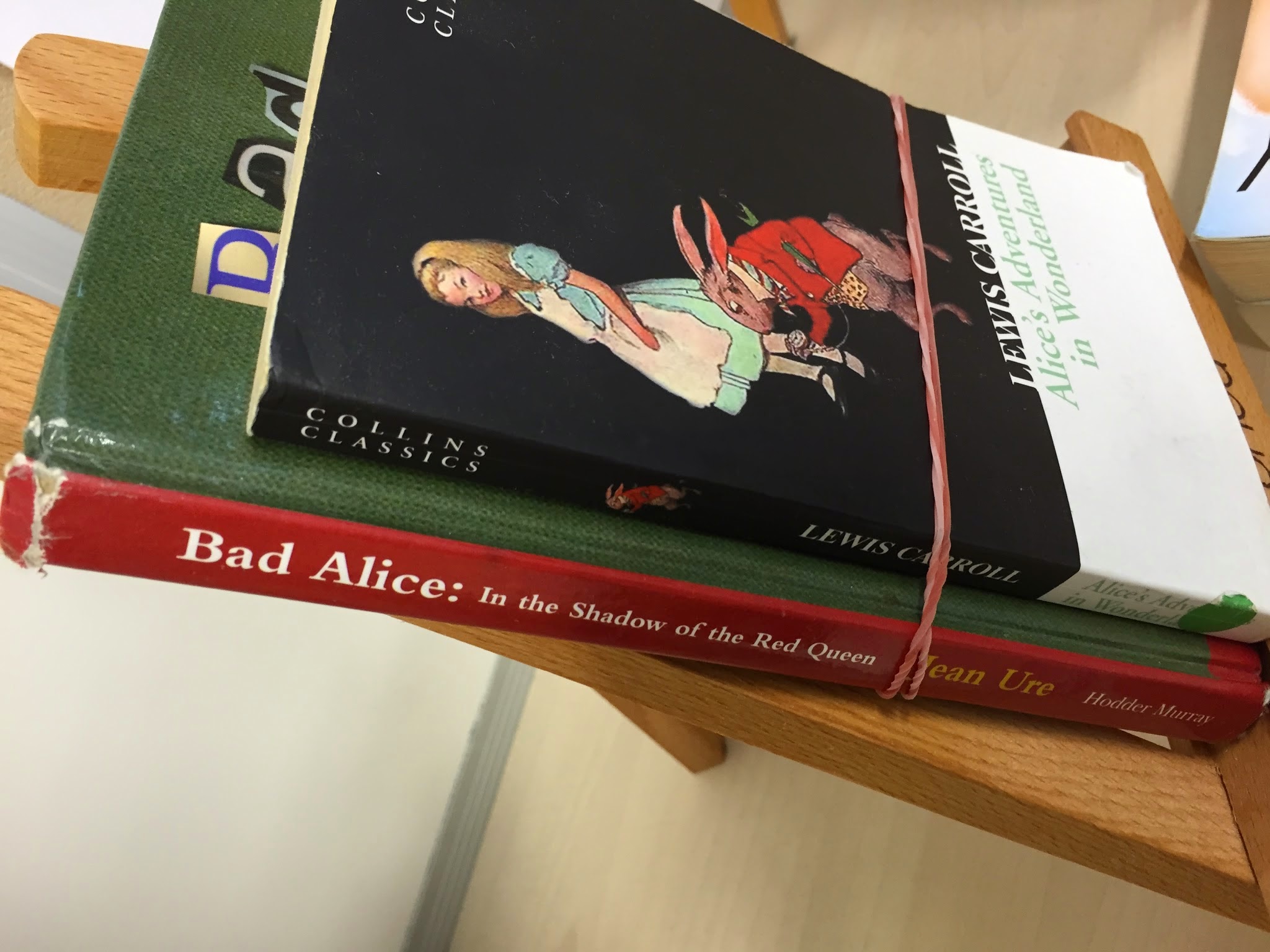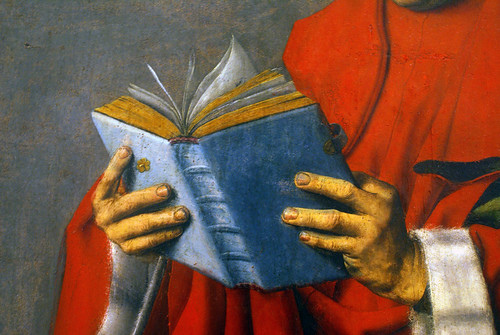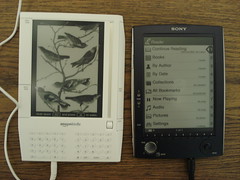The
Red Dot book awards (
reddotawards.com) are one of those hybrid awards: students vote on shortlists selected by adults (school librarians). Eight books in four categories, one winner in each -- followed by a Readers Cup competition between international schools here in Singapore.
"But what's the mission statement? Good literature or just promoting books from various countries?" someone asked as we gathered to sort through the longlists of the four categories this year.
My gut response was "good literature from various countries."
The
awards website's "About" page says:
The Red Dot categories are roughly based on readers,
rather than book formats or school divisions. (NB: It is up to every
librarian to determine which books are right for which classes in your
school to read.)
- Early Years (ages 3-7) -- formerly Picture Books
- Younger Readers (ages 7-10) -- formerly Junior) -- (where Captain Underpants and Geronimo Stilton are the assumed reading level)
- Older Readers (ages 10-14) -- formerly Middle) -- (where Inkheart and The Lightning Thief are the assumed reading level)
- Mature Readers (ages 14-adult) -- (formerly Senior) -- (where Twilight and The Book Thief are the assumed reading level)
Shortlist titles are chosen by a committee of teacher-librarians from recent
children's literature (first published in English within the past four
years), with the goal of offering a range of books from around the world.
The initiative is now entering its fifth year, just long enough for its origins to deserve review -- especially given our transient teaching population.
As one of its creators, it was interesting for me to go back through the minutes of meetings and posts in the Google Group of our local network -
ISLN (International Schools Library Network - Singapore) and remember how it developed.
First there was Barb Philip Reid, a NZ/Australian teacher-librarian at Tanglin Trust School, back in September 2008 wanting to get a Readers Cup going between all our schools, similar to the
Readers Cup in Australia. As research, she and I did a librarians-on-tour trip to Hong Kong in May 2009 to watch the finale of the
annual Battle of the Books (based on a well-established American model) run by their international school library network,
ALESS.
At the same time I had been wanting to get an annual international students-voting book award going in Singapore, inspired by the
Panda Book Awards created by SLIC (School Librarians in China) and the
Sakura Medal started by the international school librarians in Japan. (The French international schools in Asia run a similar program: see
here and
here -- and there is now the
Morning Calm Medal in South Korea.)
Barb and I figured, why not combine the two ambitions and start an annual book
award program, whose shortlists would become the source of the Readers Cup
competition booklists. Introduce the books in Oct/Nov, vote in March,
and the three older categories (as shown) would compete in May.
- Younger Readers - Year 3, 4 & 5 / Grade 2, 3 & 4
- Older Readers - Year 5, 6, 7, & 8 / Grade 4, 5, 6 & 7
- Mature Readers - Year 8+ / Grade 7+
Our booklists would then necessarily be "formative" ones, meaning only fairly recent literature, in contrast to the "summative" kind most "Battle of the Books" (Google it) use, mixing old and new titles. Both have their place. The "summative" approach guarantees kids don't miss great books from any era. The "formative" ensures students and teachers are exposed to the best of the latest -- and encourages schools to buy multiple copies of new titles every year, potentially freshening up the book cupboards.
We got a committee together and in October 2009 it was announced the award would be called the "Red Dots" (as
Singapore is proud of that epithet). The shortlists followed in November, with 14 schools immediately signing up to participate, including a British school, an American
school, a German school, a French school, a Canadian school, an
Australian school, plus just plain Anglo-heritage/international ones. And so it started, and has continued, with some variation in implementation.
Each school can do what they want with the lists. Buy them all or only a selection. Participate in voting or not. Participate in the Readers Cup or not. Give your students different criteria for choosing one book to vote for in each category. (Your personal favorite? The one you would recommend to friends the most?) We only say students should probably have read at least two books in a category in order to make a choice. We do expect just one vote per student per category. Results are tallied by category and school, and then for all the schools, giving us overall winners.
An International Approach (in Singapore)
But back to the question, how do we choose titles? What assumptions has the committee been working on over the past five years?
Barb and I did a presentation at the 2010 IASL (International Association of School Librarians) in Brisbane, Australia, on "Creating Internationally Literate Readers" (see
the workshop website and
our conference paper), which recounted the Red Dot story and summarized the challenges we face in choosing books suitable for and accessible to the wide range of students in our various international schools.
We brought up the danger of the single story (a la Chimamanda Adichie's TED talk) and the need for books to serve as both mirrors and windows of culture for children, especially given the predominance of "third culture" kids in our schools. We showed examples of books that bridge cultures well - and others that are problematic. For example, the question always has to be asked, is this book too American? too British? too Australian? too Canadian? too Singaporean? etc.
There are so many factors, but these are the major ones considered for the Red Dot books:
- Publication date: published in English within the past four years. That seems to increase the chance that books are available in paperback. It also allows enough time for us to take advantage of other/national book awards which may be limited to just the past year - we can choose from their backlists.
- Cost and ease of access: If a book is perfect, but not available through our regular book-buying channels, or only available in hardcover, we hesitate to choose it. Likewise, if a book is available as an ebook as well as print, that would give it extra points. Everyone runs their Red Dot program differently, but we assume multiple copies will be purchased.
- Genres: with only eight titles per category, variety is desirable, but there is no formula. One non-fiction? One poetry or verse novel? One graphic novel? One fantasy? One historical fiction? One book in translation? One book featuring global concerns, like child labor or refugees or war? There has been talk of starting a separate category for graphic novels. Maybe next year?
- Reading Level vs. Reader Maturity Level: This is the hardest thing to gauge. Where to place a book. Sometimes we get it wrong. There is an assumed one year overlap (at least for the Readers Cup)
between Younger and Older Readers, and Older and Mature Readers. And schools have different comfort levels with language and content. All we can say is, each librarian is responsible for reading and placing the books in their school. There is no requirement that each school stock each book. Students don't have to read all the books in order to vote.
- Country of origin or country of flavor: We like to include a book or two in each category that reflects the region. Having said that, we try not to privilege country of origin over quality. If there's a good one from Singapore, that's great (especially if the author likes to do school visits), but if not, we would be happy with a good one from, or set in, another Asian country. Also, no one country of origin should dominate a list. When in doubt, think international.
- Literary vs. Popular: This is the tension in the modified children's choice style of book awards. They don't pick the longlist or shortlist - they only get to vote. So are we choosing books we want them to read? Or books they would choose to read on their own? Should we choose a book if we already have a sense that it's going to a big hit? Or avoid the easy choice and try to put another one in their path, a lesser known one that could have just as much appeal? (Some of our past choices might look like we went for a bestseller, but if you check the dates, we chose them before their massive popularity - e.g., "The Hunger Games".)
The bottom line is, we are buying multiple copies of these books. They might not have to be texts worth teaching in depth, but if the extra copies are going to be used (after the Red Dot cycle is over) for literature circles or to enhance class libraries, then we want both quality and appeal. I know I want books my students can possibly make at least two connections with (using the Keene & Zimmerman / Harvey & Goudvis strategies):
- Text-to-Self -- emotional or personal connections -- think empathy...
- Text-to-World -- social or political or historical connections -- relevant issues or introduction to other cultures...
- Text-to-Text -- literary/literacy or intellectual connections -- perhaps an author, series, or genre that will keep kids reading...
Balance is Everything
This means within the list, across the categories, and across the years. For all the factors above.
I found some old photos of our Red Dot committee shortlist meeting from September 2010. Here we are: drinks, nibbles, laptops (note the person being skyped in), smartphones, and books. I recall it was a marathon session.
And here's the whiteboard where the balance of the lists was incessantly being assessed.
This year we've split into two groups to do the selection: Early/Younger and Older/Mature. Time is ticking and we should be finishing our lists within the next two weeks. There are books to be bought. And a new website to get up and running. Watch
reddotawards.com for updates......








































































